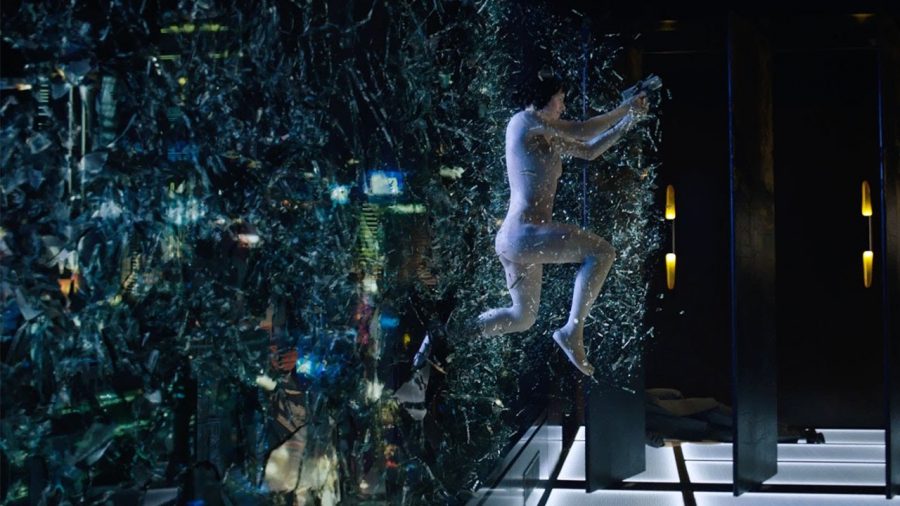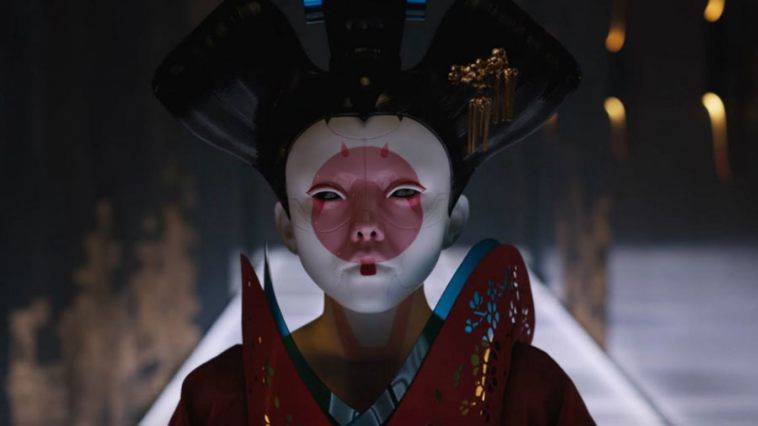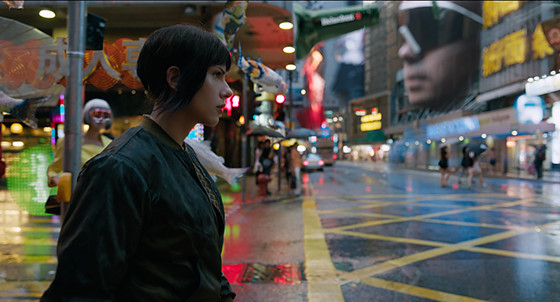4. Tolerance of Ambiguity

In the 2012 documentary The Pervert’s Guide to Ideology directed by Sophie Fiennes, the film’s star, cultural critic and Lacanian psychoanalyst Slavoj Žižek draws a cultural metaphor from a film that was strongly influenced by Oshii’s GITS: The Matrix (1999, the Wachowskis):
The choice between the blue or the red pill is not really a choice between illusion and reality. Of course The Matrix is a machine for fictions, but these are fictions which already structure our reality. If you take away from our reality the symbolic fictions that regulate it, you lose reality itself. (…) I want a third pill. So what is the third pill? Definitely not some kind of transcendental pill which enables a fake fast food religious experience, but a pill which would enable me to perceive not the reality behind the illusion, but reality in illusion itself. (…) Our fundamental delusion today is not believing in what is only a fiction, to take fictions too seriously—on the contrary, it is not taking fictions seriously enough.
This is precisely the kind of reality-in-a-blender philosophizing that has created legions of cult fans for the GITS franchise. Here we see the philosopher-as-artist’s urge to push minds beyond the frameworks that are comfortable. More specifically we see here an echo of one of core thematic principles that structures the GITS franchise: can we find the balancing point between humans creating reality and reality creating humans? And are we taking our creative powers “seriously enough,” especially when it comes to the issue of our own identities?
In a sense, the rich ambiguities woven into the fabric of the GITS franchise invite viewers to sample all three “,” and more importantly learn to move between the effects of each. And again we should reaffirm that while the niche or cult following for the original GITS franchise has an in-built higher tolerance for such thought experiments, it is entirely reasonable for a transnational blockbuster like Sanders’ GITS to content itself with merely hinting at such depths, and doing so while remaining firmly within its action-driven genre.
5. Tolerance of Formal Experimentation

The handful of Oshii’s non-GITS films listed above in point 3 makes clear his broad penchant for experimentation with form, but even if we confine our examination to his two GITS films we see this experimentation again on a smaller scale. In the 1995 film and to a lesser extent in the 2004 follow up we see something quite fascinating. Sequences fall into one of three basic categories.
First, of course, there are spectacularly choreographed action sequences, but these are balanced with much more slow paced sequences in which the characters do almost nothing but talk to each other—usually at greater length than one might expect, and almost always regarding heavy, metaphysical concerns.
These first two categories for the most part are what propel plot and character development, but then there is a third, completely unexpected type of sequence. No less meticulously detailed than the action scenes, there are several long sequences that are almost purely atmospheric, and appear designed to allow viewers time to meditate on the plot machinations and philosophical musings while also remaining immersed in the world the characters inhabit.
In his formulation of GITS, Sanders rightly suspects that this somewhat disjointed formal structure of the anime will not work as well in a live action thriller. Sanders is no Terrence Malick, to draw a usefully strange comparison.
While Terrence Malick’s films have a similar, intentionally conjunctive structure that unites such disparate sequences, he does not make PG-13 rated SF action thrillers—Malick is no Rupert Sanders. What Sanders does instead in order to honor the earlier material both structurally and aesthetically is to experiment with repurposing iconic sequences, characters and bits of trivia from both the original films and (at least one of) Oshii’s non-GITS films.
For example, the garbage truck chase and ensuing chase on foot from early in the original anime is here repurposed to have the garbage collectors’ brains hacked and taken control of by Kuze/Hideo (Michael Carmen Pitt, here a repurposed version of the character known originally as “The Puppet Master”) in order to exact murderous revenge by remote control upon Dr. Ouelet.
In the live action, this scene also combines two characters from the anime into one, arrives somewhat later in the story, and leads directly into an interrogation scene with the surviving garbage collector. The interrogation scene itself is not only visualized much differently, but also further repurposed to add to the growing suspicion within the story that Major/Mira/Motoko’s memories have been partially overwritten by Ouelet and Cutter.
Like much of the live action film, this “remixing” of the story may be initially off putting to fans of the original, but when one considers Sanders’ desire to both translate some of the best loved moments from the anime into live action while also making the film his own (rather than a literal shot for shot remake) it works well.
When combined with the dropping of “Easter Eggs” like the robo-geishas lifted from Oshii’s GITS 2: Innocence and the name given to Motoko and her mother Hairi’s apartment block: Avalon—a reference to Oshii’s 2001 live action film of the same name—this remixing of story and characters opens a door to a hidden intellectual complexity within Sanders’ film. Fans of the original are given the gift of engaging with the live action at the level of a metaphorical sliding tile puzzle that is rearranged here in the live action.
Even further, this rearrangement itself keys into the central metaphysical themes of the GITS regarding the very nature of memory and how human identities and human stories are constructed and reconstructed in modern globalized technological society. Again: this live action film is functioning at the level of adding something new to the overall franchise, rather than imposing itself as a work that subsumes or replaces the original franchise.
6. Tolerance of Excessive Spectacle

It should be uncontroversial to state that one of the things that sells movies to a global audience is the element of visual spectacle. As noted above, the Oshii GITS films strike a three way balance between the spectacles of action and atmosphere taken together with a third more intellectual element of dialog heavy sequences. Again, partly because of the desired global audience for the live action film, its action set pieces heavily outweigh the other elements it must incorporate to truly connect with its source material.
One place where Sanders’ film unfortunately falters is in its incorporation of 3D. 3D technology is limited because the filters needed to view it slightly darken the received images.
In 2D presentation the film’s predominantly dark visual textures glitter with the depth and richness of their production design and costuming. In 3D, however, they shift, by turns, toward either dark, muddy incomprehensibility, or to an overwhelming multi-layering effect in which the visual compositions and blocking of action within them fail to effectively guide the viewer’s eye to focus on the main actions and characters.
In 2D, however, the film’s deliberately excessive spectacle succeeds at generating a smartly updated vision of Oshii’s earlier world creation efforts. More than this, once freed from the dampening effects of 3D the visual design serves to crisply delineate the different social strata in the world of the film. There is first the central city in which the majority of the film’s activity occurs. This space, of course, features the film’s most brightly colored and sparkling design work.
As the story turns deeper inward into dark alleys and grimy spaces hidden within buildings, the visual design remains spectacular but shifts toward revelling in darkness and lashed-together, ramshackle technology. Then when the narrative leads Major/Mira/Motoko toward her origins the production design leads us into yet another layer of spectacle.
This time we find ourselves transported (tracking also the metaphor of self-discovery that parallels the physical journey) into the bright daylight that illuminates the overcrowded residential spaces on the outskirts of the city center. And in the film’s final act (again: repurposed/remixed from the original anime) we fall completely away from the light into the old, collapsing and largely abandoned area of the city where Motoko and Hideo will at last find the grim truth of their former lives, now changed forever.
7. Tolerance of Filmmakers Making the Movies They Want to Make, Instead of the Movies We Want Them to Make

To exaggerate only slightly for the purposes of making a point: the rise and fall of a director’s career, not to mention in some cases the fortune of an entire movie studio, can be tied to the proper handling of the risks associated with a single big budget feature film.
In the case of a property like the GITS franchise, some of these risks are tied to the pre-existing fandom. Of course the makers of a big budget film emerging from an existing franchise must set their eyes on the fandom surrounding that franchise, but they also must direct their gaze toward the broader horizon of a global audience.
The rise of the internet has generated global fan cultures that have blurred the lines between the original creators of franchises like GITS and fan-fictioneers who increasingly go beyond simply writing or illustrating their works to engage even in re-editing available video footage and producing new footage of their own. In this cultural space, fans have progressively come to experience a greater stake of ownership in the fictions to which they devote themselves.
To the extent that the actual owners of these fictions will continue to produce new installments in franchises such as GITS, fans might find it useful, however, to strike a balance between taking fictions too seriously and not taking fictions seriously enough.
Author Bio: Jim has been a projectionist for over 25 years at the University of Michigan, where he earned his degree in film studies. He has long studied how formal aesthetics affect the creation of potentially life-changing meaning in art forms from film to architecture. He has presented multimedia lectures on anime, and composes experimental electronic music as The Fleshy Timeclock.